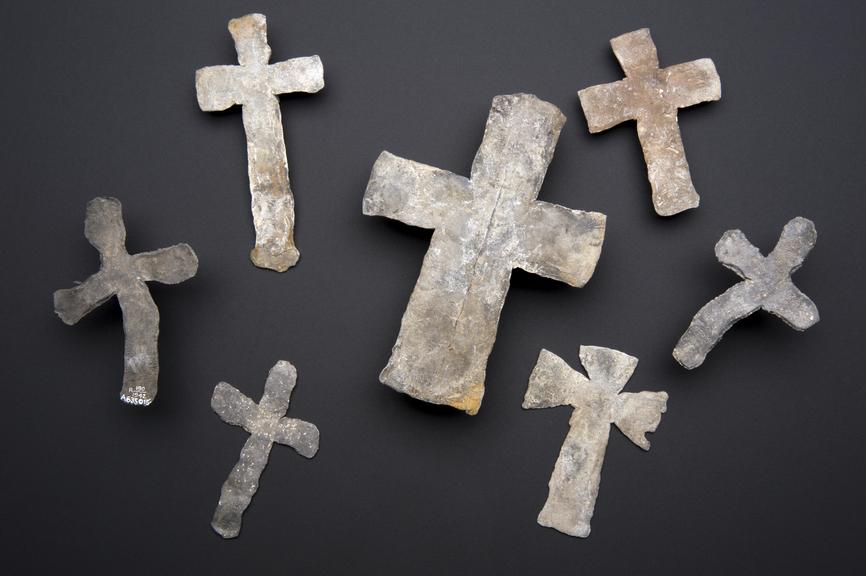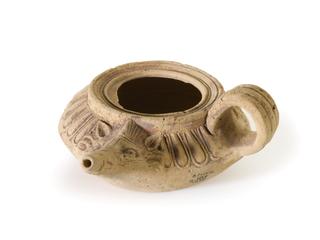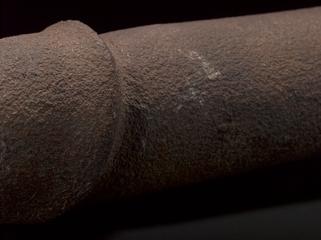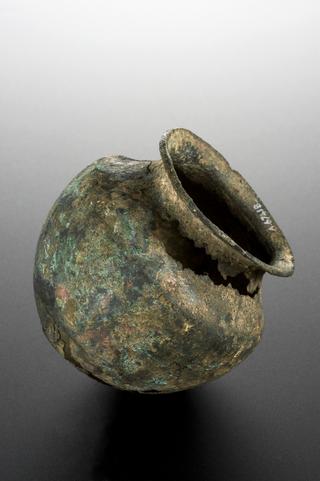

Lead mortuary cross, said to be from a monastic victim of the plague, English, 1601-1700
How did graveyards and cemeteries cope with the vast number of burials during epidemics such as the Black Death? Most often bodies were piled in mass burial pits deep underground. Found during the excavation of a London cemetery, this lead cross was said to have lain with victims of the plague during the 1600s.
What were they for? Do they represent faith at a time of fear and crisis? Or were they used simply as markers? Experts say that medieval burial crosses were believed to protect the bodily remains. These ones are pretty basic in design and production – undecorated, with irregular edges and a battered surface. Were they made in a hurry because of the rapid burial of plague victims?
Archaeologists Barney Sloane and Bruce Watson offer another explanation. Reviewing the evidence, they observed that the crosses were not found in mass burial pits but in smaller shafts suggestive of an institutional system of burial. They concluded that the bodies were most likely prisoners from nearby Newgate Gaol who had died of ‘gaol distemper’, or typhus, in the 1700s.
And the crosses? Since no other lead burial crosses of this date have been reported, and documentary evidence is not yet found, Sloane and Watson can only speculate. Made by unskilled hands, perhaps the prisoners produced them for dying inmates, or themselves? We may never know the details of the makers or the recipients, but it’s certain that each cross will have its own unique story.
Details
- Category:
- Classical & Medieval Medicine
- Collection:
- Sir Henry Wellcome's Museum Collection
- Object Number:
- A635018
- Materials:
- lead
- Measurements:
-
overall: 1 mm x 60 mm x 90 mm,0.02kg
- type:
- mortuary cross
- credit:
- Wellcome Trust (Purchased from Stevens)




